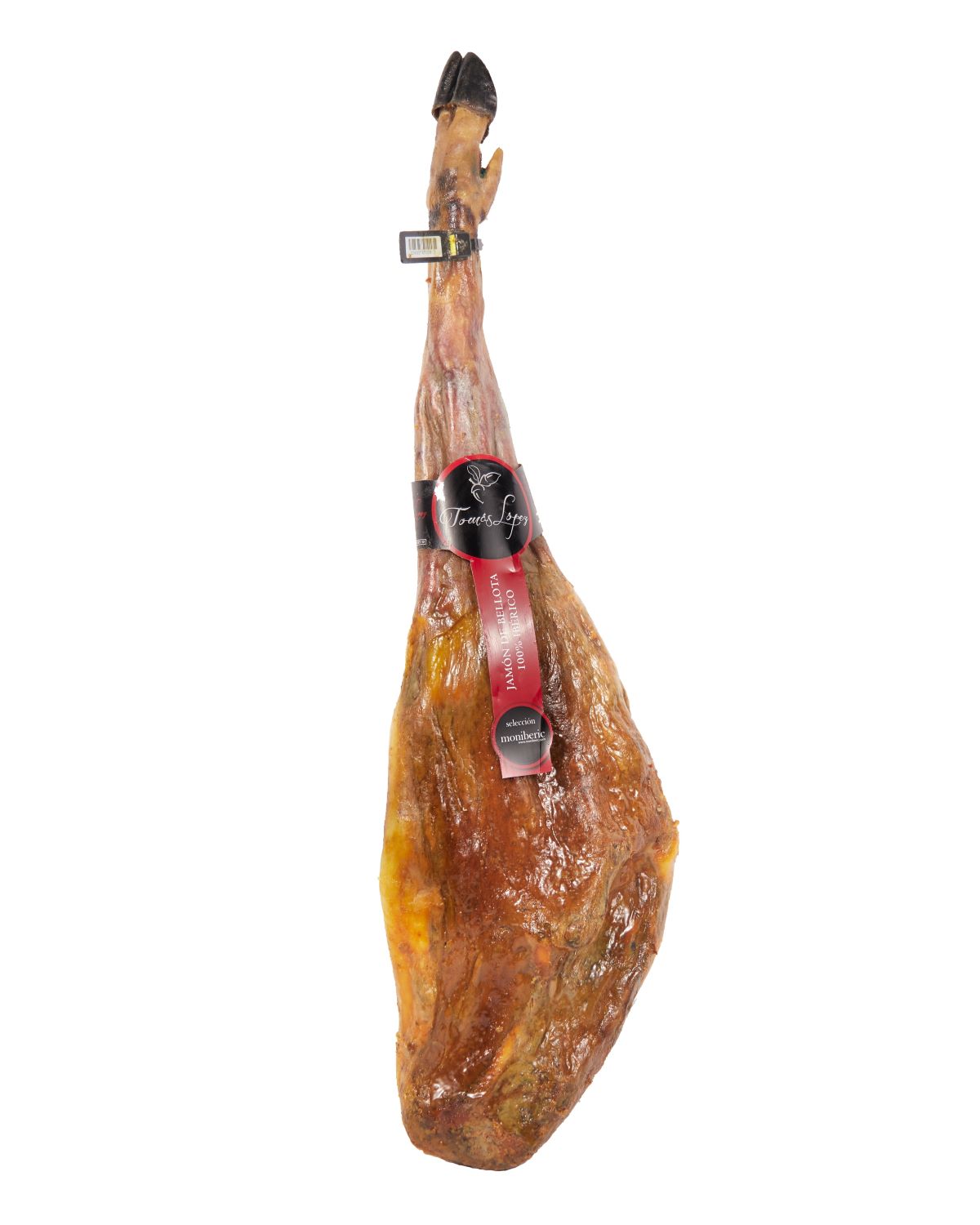Here you will find some points to keep in mind when choosing a ham in order to make the best choice. As we mentioned in previous posts, the first and most important thing is to know how long it will take us to consume the piece approximately.
It is not the same to buy a ham to be consumed in the same day (the curing must be perfect for all its parts) that if it is going to be consumed in one month (the thinnest and driest part called “babilla” or “contramaza” must have an optimal curing because that is where we are going to start the ham. If the wide part, known as “maza”, is a little tender, we do not have to worry because on the days when we cut the “babilla”, it will finish curing.
Let’s start with the first point:
1. The “caña” must be thin
The Iberian ham is thin and stylized, and has an elongated “caña”. The thinner and narrower the “caña”, the more evidence that the piece is of high quality.
This indicates that during the “montanera” season the animal has exercised with the search for acorns, obtaining a greater development in its muscles and infiltration of fat.
2. Mistaken «pata negra»
Saying that a ham is “pata negra” (black leg) to say that it is the sumun of the hams is an error. The black colour of the piece is not an uneven indicator that it comes from an Iberian pig. It refers to the color of the hoof, but not all Iberian pigs have black hooves nor are they exclusive to this breed.
There are many varieties of the Iberian breed that have a yellowish, brown or reddish skin tone. The expression “pata negra” has caused a big mistake in the market, reaching the point of having detected pieces with the hoof painted in black to be sold as if they were Iberian.
Furthermore, with the entry of the new regulations on the classification of Iberian products on the market, this designation has been exclusively reserved for hams that have been labelled by the competent authorities with the black plastic seal, i.e. that their purity of the Iberian breed is 100% and that their diet during the fattening period is based on acorns. Another misused term is “Jabugo”.


It refers to the Denomination of Origin of Huelva and, therefore, Jabugo hams are produced in different qualities.
3. Weight and Output
The weight of the piece of an Iberian ham goes from 6 to 8 kilos and on the shoulder it goes from 4 to 6 kilos. This characteristic will not alter the quality of the product, but we have to take it into account considering the consumption we are going to make: for example, larger pieces are more suitable for the catering industry as they have a higher output.
40% of the piece of ham is not usable (bones and fat), in the shoulder the percentage increases to 50%.
In the next post we will talk about the missing points.
Contactar